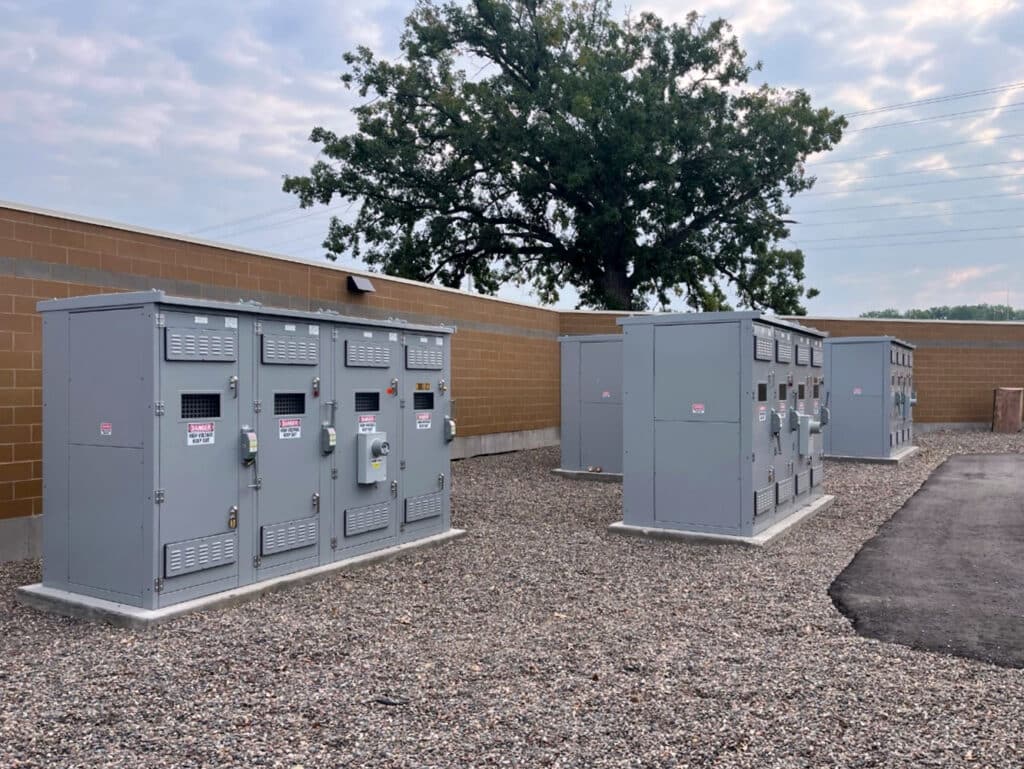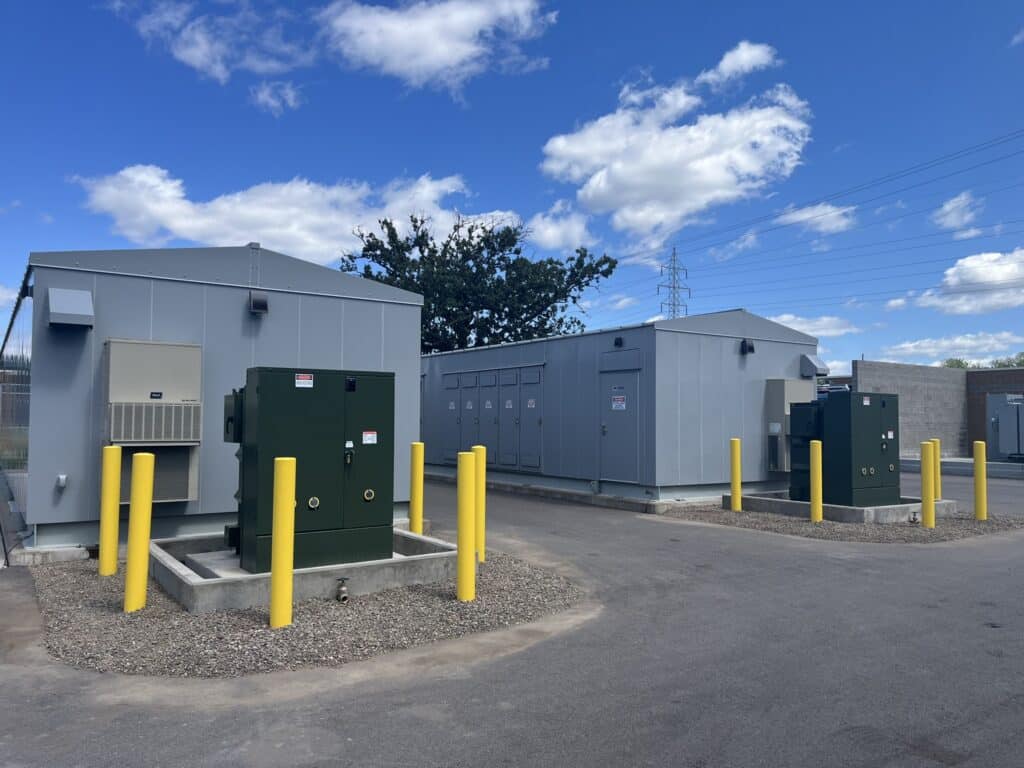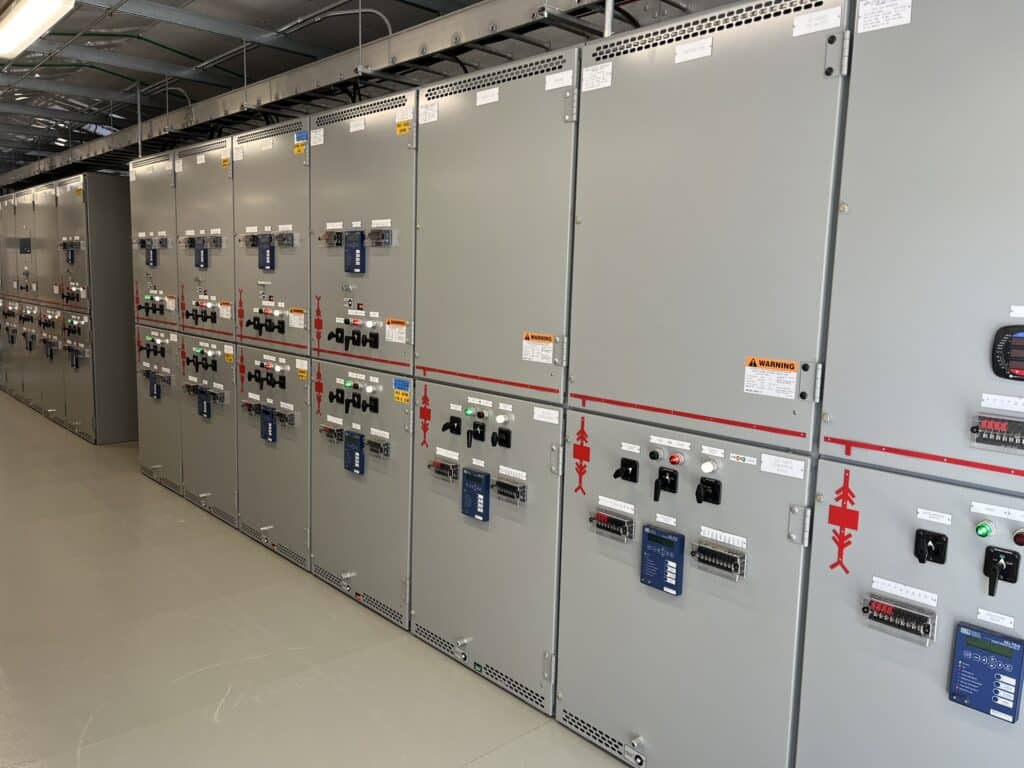Behind the Supply: The Electrical Systems That Keep Water Flowing



Reliable water infrastructure is the pillar of everyday communities—it ensures that the places we live, work, and play in have uninterrupted access to clean, safe water. This water supply is vital not only for drinking, but also for sanitation, public health, firefighting, food production, and economic stability. Communities quickly see the effects when this infrastructure wavers, ranging from boil-water advisories to entire service outages. With these consequences in mind, it is essential for water utilities to remain proactive when dealing with aging water infrastructure.
Modernizing a Century-Old Backbone of Water Supply
The recent upgrades for the City of Minneapolis Water Treatment and Distribution Services at their Pump Station 5 facility are a compelling case for proactive renewal of water infrastructure. Constructed in the 1920s, the Pump Station 5 facility is a combined low-service and high-service pump station. The low-service pumps take raw water from the Mississippi River to the Fridley Softening Plant, and the high-service pumps pressurize and distribute the treated water into the distribution system for City users.
The working parts of the pumps in the station (casing, impellers, shafts, etc.) are robust and maintained with care over year of service, but the medium voltage motor starters powering them were nearing the end of their useful life. Additionally, while some motor starters were replaced throughout the years, finding replacement parts became increasingly difficult as they grew obsolete. The risk was clear to the City—progressive failures of increasingly obsolete electrical equipment could ultimately diminish the capacity needed to provide adequate distribution pressure.
The project’s first goal was replacing the facility’s aging medium voltage motor starters. CDM Smith led the project and TKDA provided electrical engineering design services. Due to the critical nature of this project and the desire to think wholistically, the City expanded the project scope to better understand the facility’s electrical backbone through a complete campus electrical equipment condition assessment.
When it comes to running water, people don’t often think about the importance of electrical infrastructure. “The impact of these facilities is if you lose some functionality through electrical equipment failure, you could negatively impact water production,” said TKDA Project Manager, Rob Choals. “We take it for granted when you turn the faucet and water comes out, but there’s a lot of electrical infrastructure that keeps water supply systems running efficiently.”
Ultimately, the single main 13.8kV switchgear was replaced and relocated with two new 13.8kV/2.4kV electrically-redundant stand-alone substation shelters at a new greenfield location within the campus. Additionally, the team added a new electrical room by repurposing existing space within the station. The new electrical room provides a secure, clean, and conditioned space for the new 2400V synchronous motor controllers and double-ended 480V/208-volt switchboard electrical equipment.
Maintaining Continuous Water Supply Operations
During the upgrades, the team had to ensure continuous operation, which required delicate planning with the City, electricians, maintenance crews, and contractors. Additionally, the team had to provide temporary power rerouting to keep flowing. The team developed a detailed phased sequence of construction to maintain adequate pumping capacities and continuous plant operation. These complexities were compounded by the plant’s age and buried utilities, but the collaborative team achieved its goal: an upgraded electrical system that supports effective water treatment and distribution.
“Having a reliable water system is crucial for the health and well-being of our communities,” said Peter Pfister from the City of Minneapolis Water Treatment and Distribution Services. “The upgrades that CDM Smith and TKDA designed for our Fridley campus have significantly improved the reliability, redundancy, and flexibility of our electrical system, which is crucial to our ability to reliably provide safe and clean water for our residents and wholesale customers. This team demonstrated the true importance of investing in our water infrastructure proactively to achieve these ends.”
Reliable Water Infrastructure for Future Generations
The City removed the risk of major system outages caused by electrical equipment failure by upgrading the electrical infrastructure to enable safe, redundant, and robust operations and maintenance. Nationwide, municipalities face similar challenges—infrastructure with electrical systems that have exceeded their typical lifespan, limited availability of replacement parts due to aging infrastructure, and the urgency of keeping operations running during upgrades. Through a collaborative effort, the City, CDM Smith, and TKDA worked together to show how cities can modernize water infrastructure without halting service to residents.
Reliable water infrastructure is non-negotiable, and taking a forward-thinking approach and investing in water infrastructure early is essential. This project serves as a reminder that the systems we often take for granted require constant attention and innovation to keep our communities healthy and thriving.
Contact Us

ROB CHOALS
Electrical Group Manager
Contact Rob

